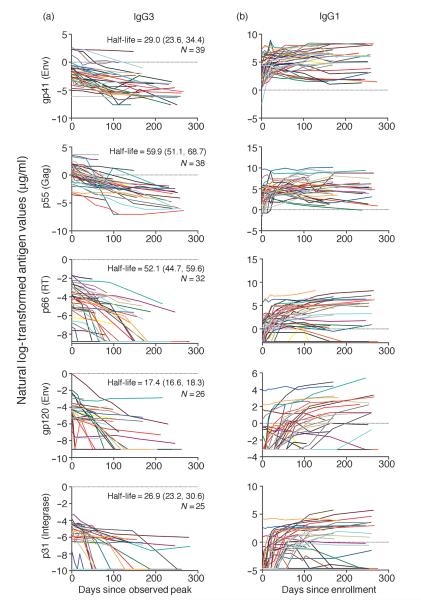Fig. 2.
Levels of HIV-1-specific IgG1 remain stable, whereas HIV-1-specific IgG3 declines over time during acute HIV-1 infection. Declining HIV-1-specific IgG3 antibody responses were aligned according to the peak of each response, modeled over time, and response half-life was estimated using the exponential decay model. Half-life in days (95% confidence interval) and N (number of participants with at least one positive time point after peak) are depicted in each panel (a). HIV-1-specific IgG1 antibody levels did not decline and, therefore, were not fit to the exponential decay model. For this reason, IgG1 antibody responses were aligned to enrollment into the study (b).

